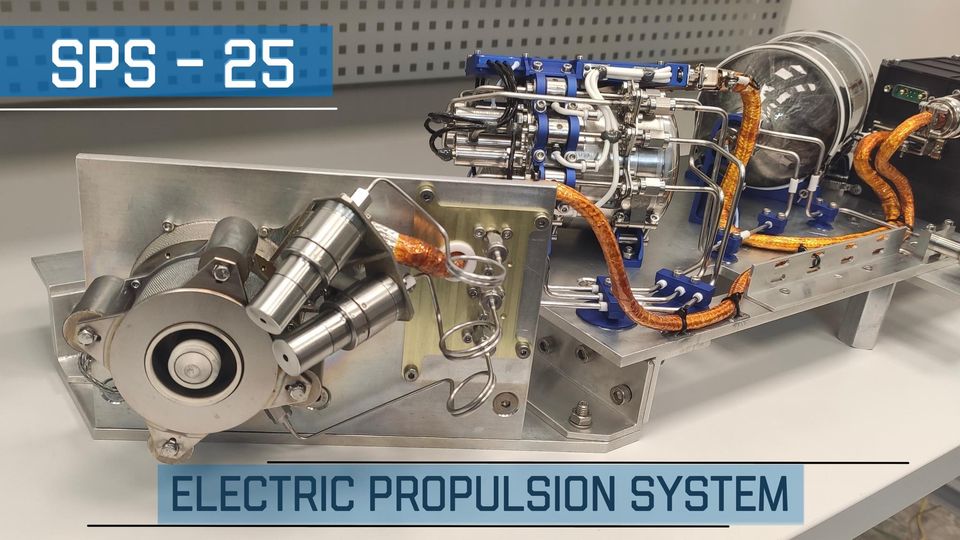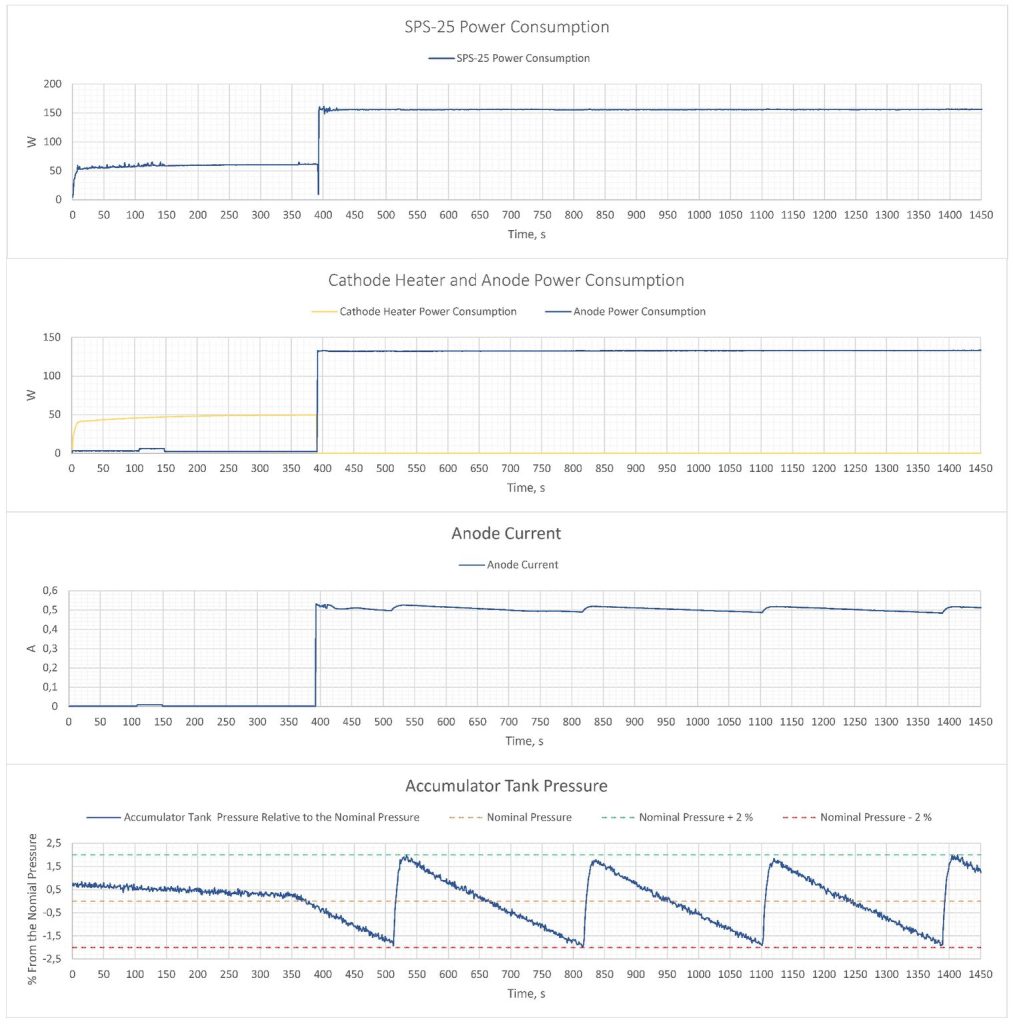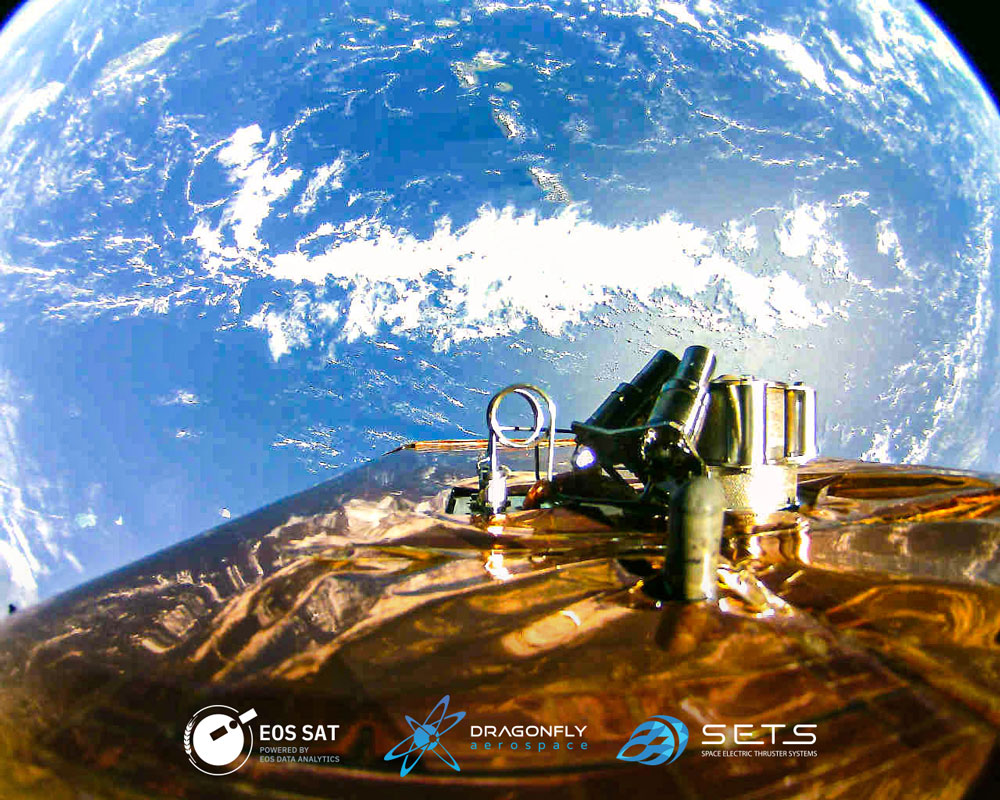SETS, a provider of electric propulsion systems based on Hall thrusters, has successfully tested the SPS-25 space propulsion system in orbit. After precise testing and system checks, the ground control team activated the propulsion system to correct the EOSAT-1 satellite’s orbit. Data received indicates that it is operating successfully.
Use Case Description
Space Electric Thruster Systems (SETS) is a prominent space propulsion company specializing in the full cycle of electric propulsion systems development to meet the diverse needs of spacecraft.
SETS has consistently distinguished itself as a company offering holistic solutions to satellite manufacturers. These solutions are particularly appealing because they negate manufacturers’ need to procure and integrate individual systems from various vendors.
In May 2023, SETS achieved a significant milestone by successfully testing its SPS-25 space propulsion system installed on EOSAT-1 for orbit maintenance and eventual deorbit. EOS SAT-1 is the first satellite of the future agricultural constellation by EOS Data Analytics (EOSDA) and Dragonfly Aerospace. Launched in January 2023, the SPS-25 Propulsion System has proved to be the most advanced solution for satellite constellations.
Mission details
EOSDA demands consistent imaging of the Earth, precisely at the same time of day to maintain uniform sun angles. This consistency is paramount for achieving high-precision agricultural data analytics throughout the satellite’s operational lifespan, which spans five years.
In this context, the primary role of the SPS-25 propulsion system is to uphold the satellite’s RAAN (Right Ascension of Ascending Node), ensuring this crucial consistency. The outcome is sharper, more detailed images with precise location references. This competitive advantage positions the satellite prominently in the remote sensing market, emphasizing its capability to deliver superior performance in Earth observation.
In SETS, we employ outstanding and efficient methodologies in the design of our Hall thrusters, enabling a notable total impulse while consuming significantly less propellant compared to traditional chemical thrusters. Despite encountering substantial challenges, our engineering team successfully navigated the assembly of the SPS-25 thruster system. Remarkably, we accomplished this feat in a record time of seven months, a notable contrast to the 1-1.5 years typically required by other market players.
This swift and effective preparation underscores SETS’ commitment to innovation and agility in addressing complex engineering challenges.
Our solution
We have created a cutting-edge SPS-25 propulsion system that features Hall-effect thrusters, with our proprietary cathodes and power processing units making the technology more efficient.

The SPS-25 propulsion system for the EOS SAT-1 satellite has an entire wet mass of less than 7.5 kg and a total impulse 17 kNs, which is sufficient to maintain the satellite’s orbit for five years and ensure its subsequent removal from orbit at the end of its service life.
The SPS-25 propulsion system was developed in Ukraine despite the extremely difficult circumstances. Our team completed the final assembly and successful testing of the system’s components in the spring of 2022.
The entire system was then shipped to Dragonfly Aerospace in South Africa, where the thruster system was installed onto the satellite on April 12. Then, it was launched into orbit on a Falcon 9 rocket on January 3, 2023. After a series of inspections, the ground control team activated the propulsion system to correct the satellite’s orbit, and as of early May 2023, data received indicated that it is operating successfully.
Our team has successfully received and processed all telemetry data related to a significant number of ignitions within the propulsion system. All parameters have met the specified requirements and have aligned with our expectations based on laboratory testing. Throughout the operational phase, all subsystems have been functioning flawlessly, without any failures, including the electrical parameters of the thruster, valve operations, and temperature or pressure measurements.
The figure below demonstrates the general telemetry from one of the ignitions, specifically showcasing the power parameters of the propulsion system, main power supplies, thruster current during operation, and pressure stabilization in the accumulator tank of our feed system.

Impact
The SPS-25 electric propulsion system has proven its practical efficiency. The primary purpose of the ST-25 thruster is to maintain a satellite in its target orbit during its operational lifetime and facilitate controlled deorbit after mission completion. The technical advantages of the S-25 contribute to achieving these mission objectives effectively. ST-25 demonstrates several technical characteristics that point to its superiority compared to other thrusters. It lies in its successful testing of a cluster configuration, power supply flexibility, small size, and low power consumption.
The integration of a permanent magnet in the central core is a distinctive feature of the ST-25 thruster. This design significantly reduces the input electric power required for creating the radial magnetic field in the thruster’s acceleration channel.
The efficient ionization process, coupled with the acceleration of ions by an axial electrical field, contributes to the creation of a high-thrust, neutral atom flow of the working substance (Xenon). The use of a preheated hollow cathode further ensures the stability of the arc discharge in the acceleration channel, enhancing the overall performance of the thruster. The reduction in the level of electric power required for radial magnetic field creation during the laboratory tests underscores the practical advantages of the ST-25 thruster.
These features collectively enhance the reliability, redundancy, and operational capabilities of the propulsion system, making it a suitable choice for future space missions. For instance, thanks to the extended operation of the satellite enabled by our Hall thruster ST-25, agribusiness clients can optimize resource usage and implement precision farming methods over an extended period, remaining profitable and sustainable. In summary, the Hall thruster ST-25 contributes to the overall progress of engineering, and space exploration.





